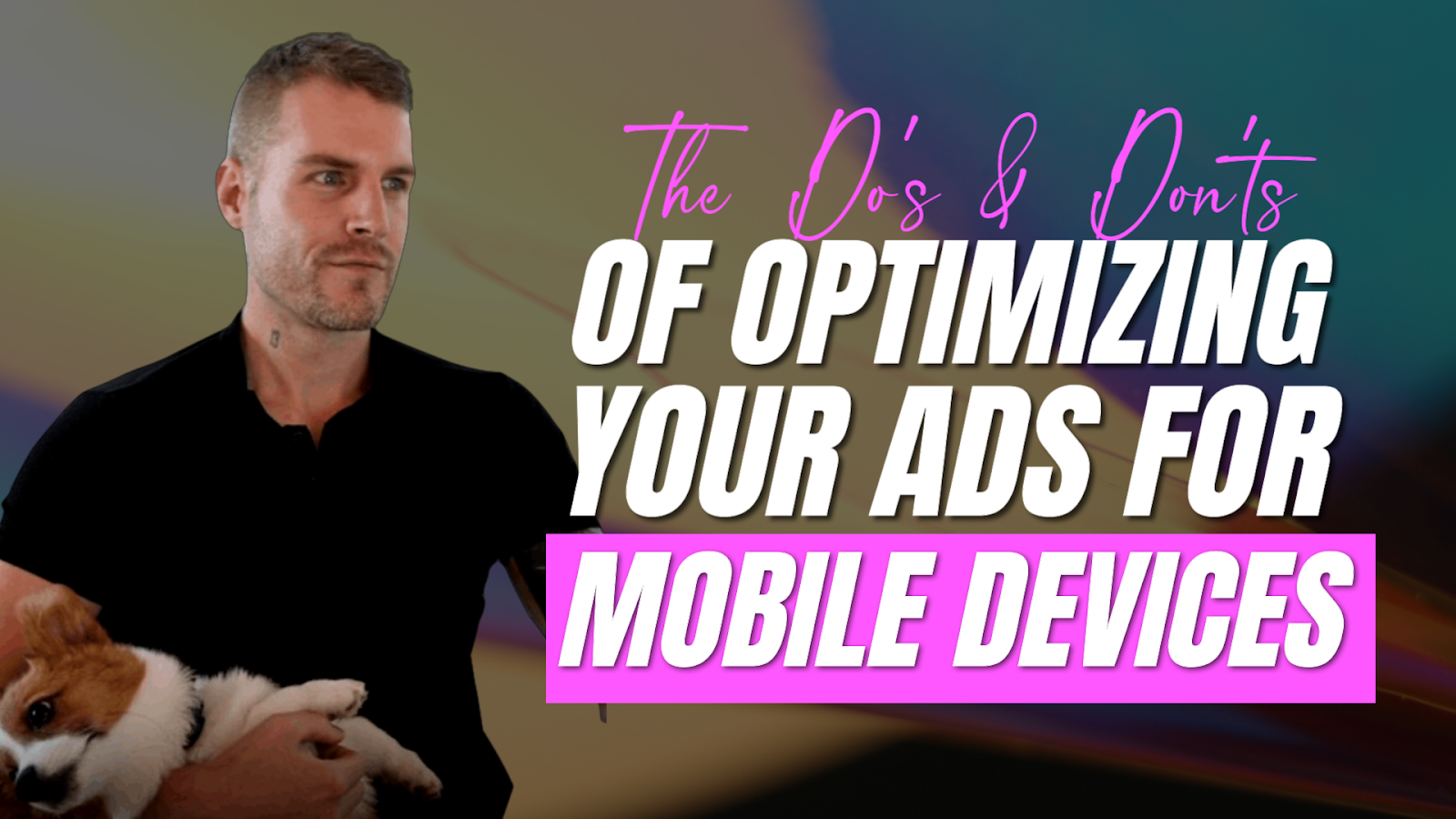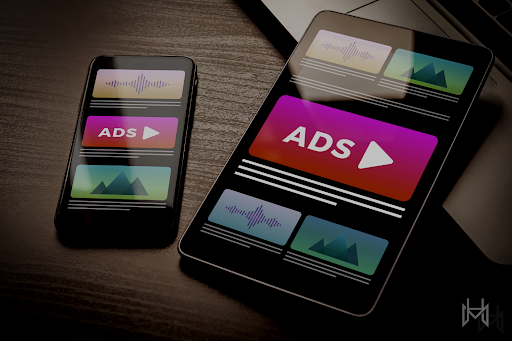
The Dos and Don’ts of Optimizing Your Ads for Mobile Devices
As of 2023, there are an estimated 4.32 billion active mobile internet users worldwide – and this number is growing exponentially. This presents a huge opportunity for businesses to reach out to their target audiences through mobile advertising campaigns. Mobile optimization helps companies to maximize the effectiveness of their ads by displaying them in the most optimal way on different devices.
Ad optimization on mobile devices requires a unique set of strategies and considerations. The complexity of creating a successful mobile campaign lies in the fact that each device presents its challenges. To optimize ads for different types of mobile devices, businesses must first understand the nuances of various optimization strategies.
Fortunately, this article provides a comprehensive guide on the dos and don’ts of mobile ad optimization. It outlines best practices for optimizing ads to ensure they are displayed optimally across devices and common mistakes to avoid. Moreover, it also touches on emerging trends and future considerations in the industry that businesses must be aware of.
By the end of this article, you should have a better understanding of how to create successful mobile ad campaigns. So let’s get started!
Dos: Best Practices for Mobile Ad Optimization

You want your mobile ad campaigns to be successful, and that means optimizing them for different devices. By utilizing the best practices of mobile ad optimization, you can ensure that your ads are displayed optimally across devices to maximize their effectiveness.
Here’s a list of strategies to consider when optimizing your ads for mobile devices:
Use Responsive Design
Responsive design is an effective way to ensure that your ads are displayed correctly on different types of mobile devices. Using a responsive design, your ad will automatically adjust its size and layout to fit the dimensions of the device it’s being viewed on. This ensures that your ad looks great no matter what type of device it is being viewed on.
Optimize Loading Times
Mobile device users expect fast loading times and will quickly abandon a page or ad if it takes too long. To ensure that your ads are optimized for fast loading times, consider the following:
- Compress images to reduce their file size without sacrificing quality.
- Minimize redirects and HTTP requests.
- Use caching techniques to store resources locally on the user’s device.
- Reduce the amount of code used in your ad.
Prioritize Concise and Compelling Ad Copy
A concise and compelling ad copy helps capture mobile device users’ attention and encourage them to take action. Since people tend to skim through content on their mobile devices, it’s essential to prioritize ad copy that is clear and concise. Focus your ad on the key message you want to convey, and avoid using long-winded sentences or jargon.
Use powerful language and persuasive words to compel users to take action. Native advertising uses persuasive language to create an emotional connection with the user and increase their likelihood of clicking on your ad. Remember, you have limited time to capture the user’s attention, so make sure your ad copy is compelling.
Utilize Eye-catching Visuals and Multimedia Wisely
Your ideal customer is more likely to take notice of an ad with eye-catching visuals and multimedia content. Visuals can draw the user’s attention, tell a story, or convey information quickly. Multimedia content such as videos, animations, and audio can also capture the user’s attention and engage them with your ad.
Eye-catching visuals and multimedia content should be used sparingly to avoid overwhelming the user. Consider the user’s context, such as where they are viewing your ad and their bandwidth speed, when deciding which visuals and multimedia content to use. Additionally, ensure that any visuals or multimedia content you use is optimized for mobile device users to ensure that it loads quickly and looks great.
Incorporate Clear Call-to-action (CTA) Buttons
Since mobile device users tend to skim content, it’s important to include clear call-to-action (CTA) buttons in your ads. CTA buttons should be easily visible and clearly labeled so that users know what action they are expected to take. Whether you are asking users to purchase a product, sign up for a newsletter, or download an app, your CTA should be clear and easy to find. Consider using contrasting colors for your CTA buttons to make them stand out from the rest of the content.
Implement Mobile-specific Targeting Strategies

Mobile-specific targeting strategies can help you reach more relevant audiences and improve the effectiveness of your ads. Identify audience segments likely to use mobile devices and tailor your ads accordingly.
Here are a few tips to help you get started:
- Consider the context of mobile device users’ activities and create ads that align with their current needs.
- Utilize location-based targeting to reach mobile device users in specific areas.
- Use cross-device targeting to reach mobile device users across platforms, such as desktop and tablet devices.
- Take advantage of app-based targeting to reach mobile device users using specific apps.
Don’ts: Common Mistakes to Avoid
Mobile ad optimization can be complex, and making mistakes can lead to disastrous results. To ensure that you don’t make any costly errors, avoid the following common pitfalls when creating and optimizing your mobile ads:
Overloading Ads With Excessive Content or Information
Overloading ads with too much content or information can harm their success. Not only will it make it difficult for users to focus on the key message of your ad, but it also increases the likelihood that they will abandon your ad before taking action. Additionally, excessive content can slow down loading times, resulting in a poor user experience and potentially damaging your brand reputation.
Using Small Fonts That Are Difficult to Read on Mobile Screens
Marketers may be tempted to use small fonts with their mobile ads, thinking it will make their message stand out more. Tiny fonts, however, are difficult to read and can cause users to abandon the ad before they have a chance to take action. They can also make your ad appear cluttered and less visually appealing on smaller screens.
As such, it’s best to use larger fonts that are easy to read on mobile devices. Doing so will make your ad look more polished and professional and ensure that users can easily read and take in the message of your ad. Using larger fonts also helps create an overall better user experience, which can result in improved engagement rates and higher conversion rates.
Neglecting to Test Ad Performance Across Various Devices
It’s always important to test your ads across various devices, but many marketers neglect this crucial step. Some may think their ad will work well on all platforms without testing it, while others may not want to invest the time and resources in properly optimizing their ads for different devices.
However, failing to do so can have serious consequences. Here are the common potential problems that can arise from not testing your ads across devices:
- Your ads may not appear correctly on different devices, which could lead to potential customers being turned off by how your ad looks.
- Your ads may be challenging to interact with or navigate on specific devices, resulting in poor user experience and lower engagement rates.
- You may be unable to accurately measure the effectiveness of your ads, as performance data may not be accurately tracked across different devices.
Ignoring the Importance of Mobile Landing Page Optimization
Have you ever clicked an ad on a mobile device, only to be taken to a landing page that is difficult to navigate or the content doesn’t match what was promised in the ad? If so, you are not alone. Many mobile users have faced this problem when interacting with ads on their devices.
It’s essential to remember that optimizing your mobile ad experience doesn’t stop at the ad itself; you also need to ensure that your landing page is optimized for mobile devices. This means ensuring the page loads quickly, has a responsive design that works well on different devices, and provides an overall positive user experience.
For example, if your ad promises a coupon code or free trial, you should make the offer clearly visible on the landing page. This way, users won’t have to search all over the page for it and can take advantage of your offer quickly and easily. Optimizing your mobile landing pages can ensure that users are more likely to stay on your page and take action.
Disruptive or Intrusive Ad Formats to Be Avoided
No matter how well-crafted your mobile ads are, they still need to be presented in the right way. Using disruptive or intrusive ad formats can harm users’ experience and increase bounce rates.

Examples of these types of ads include:
- Pop-ups and interstitials that take up the entire screen, blocking content from view.
- Autoplay videos or audio that start playing without users’ consent.
- Ads with excessive animation or movement.
- Ads with flashing or bright colors that can be distracting for users.
These ad formats can be incredibly annoying for users, as they interrupt their experience and can be difficult to close. To ensure that your ads are as effective as possible, it’s best to avoid these intrusive ad formats and opt for more user-friendly options instead.
Emerging Trends and Future Considerations
With the constant evolution of mobile technology, there are always new trends and considerations to keep in mind when optimizing your ads for mobile devices. Here are some emerging trends and future considerations that you should be aware of:
Impact of Voice Search
Recent advances in digital marketing have made voice search a significant factor in optimizing ad campaigns. According to a recent survey, 41% of adults in the US use voice search daily, making it an important consideration when developing ads for mobile devices.
To optimize your ads for voice search, focus on creating natural-sounding copy and utilizing long-tail keywords that are more likely to be used in spoken searches. Include location-based keywords in your ads, as voice search is more likely to return local results.
The Growing Popularity of Mobile Wallets
Mobile wallets allow customers to store payment information, making completing transactions much easier and quicker. To take advantage of this new technology, businesses should focus on creating campaigns tailored to their target audience’s needs and goals, with mobile wallet integration as a critical part of those goals.
By integrating mobile wallets such as Apple Pay or Google Pay into their ad campaigns, businesses can create a seamless checkout experience for customers, leading to higher conversions and improved ROI. Mobile wallets also provide an additional layer of security that can increase consumer trust in the business, further increasing their chances of success.
Influence of 5G on Ad Delivery and User Experience
The development of 5G technology is set to revolutionize mobile advertising, significantly impacting how ads are delivered and experienced. 5G will allow faster download speeds, reducing loading times and improving user experience. This will give businesses more flexibility in their advertising goals, as they will be able to create and deliver more complex ads without worrying about speed issues.
Moreover, 5 G’s high bandwidth capabilities will enable businesses to deliver high-resolution ads, creating a more immersive user experience. This increased quality of content will generate higher engagement rates and better user retention, making it easier for businesses to reach their target audience.
Leveraging Augmented Reality (AR) and Virtual Reality (VR)
Augmented Reality (AR) and Virtual Reality (VR) are two technologies that are becoming increasingly popular in mobile advertising. AR is a technology that overlays digital content onto the physical world, while VR immerses users in a digital world.
Any advertisers looking to create a truly immersive experience should consider incorporating AR or VR into their campaigns. Here are some ways to do so:
- Leverage AR to overlay digital content onto physical products, allowing customers to view them in more depth.
- Use VR to transport users into a virtual world, providing an engaging and interactive ad experience.
- Utilize AR/VR ads to enhance customer experiences, allowing them to explore products in more detail and interact with them in new ways.
- Leverage AR/VR to deliver location-specific ads, increasing their relevance and effectiveness.
Make the Most of Your Mobile Ad Optimization Strategies
Optimizing ads for mobile devices is essential to keeping up with the ever-evolving trends in the digital advertising industry. By following best practices and avoiding common mistakes, businesses can increase their reach and engagement rates on mobile platforms. Mobile optimization helps them create more effective campaigns that deliver great user experiences across different devices.
From using responsive design to optimize loading times to implementing mobile-specific targeting strategies and avoiding disruptive ad formats, businesses can ensure their ads are engaging and effective. It also pays to be aware of emerging trends such as the impact of voice search, mobile wallets, 5G technology, and augmented reality (AR) and virtual reality (VR).
Whether you are a seasoned marketer or just starting out, embracing the dos and avoiding the don’ts of mobile ad optimization will help you reach your desired audiences and maximize your campaign ROI. With the right strategies and considerations, you can make the most of their mobile ad optimization efforts. Start optimizing your campaigns today!
